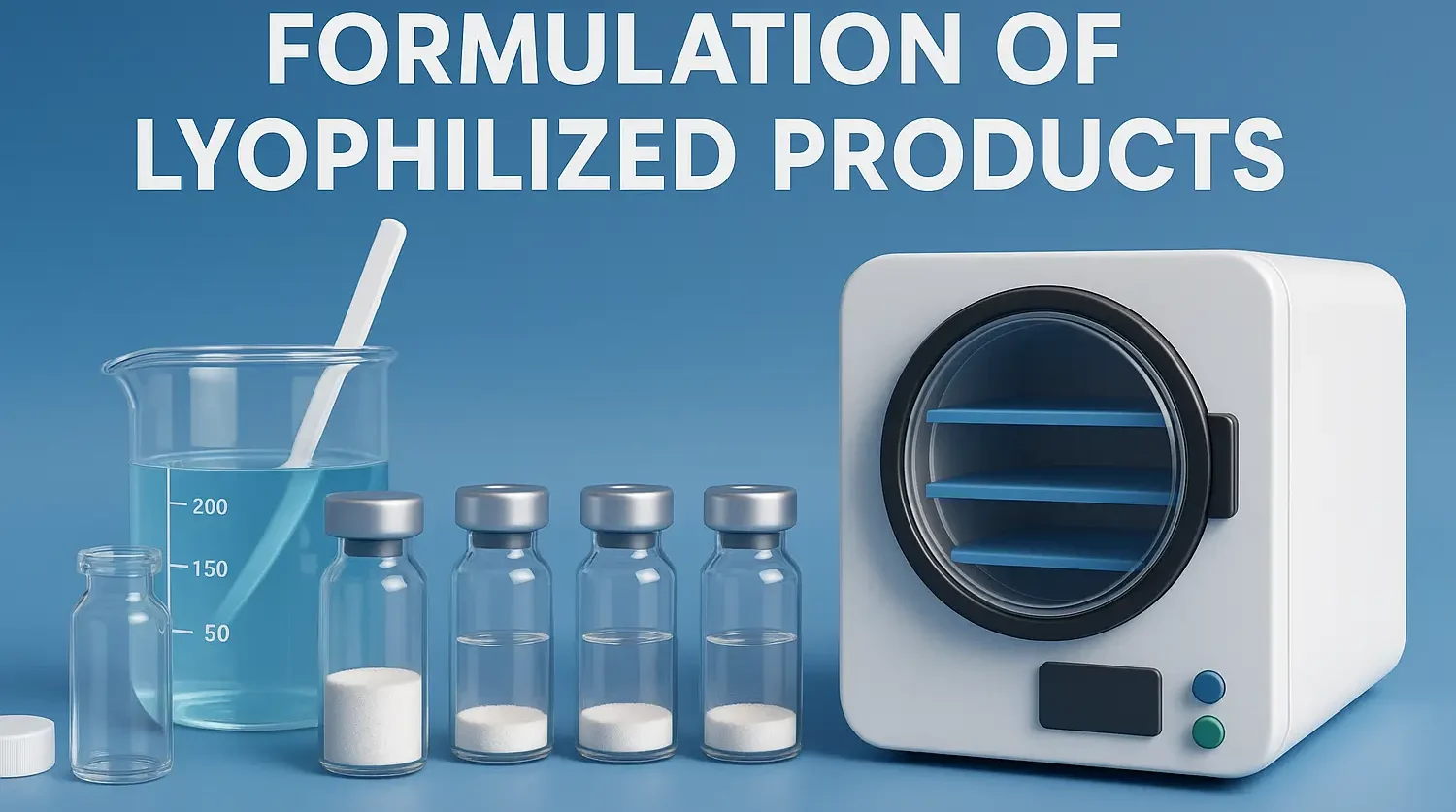- Formulation of Lyophilized Product involves selecting stable excipients and optimizing drug-solvent systems to ensure product stability during freeze-drying
- Formulation of Lyophilized Product ensures long-term stability, sterility, and rapid reconstitution.
- Lyophilized products are prepared using freeze-drying to extend the shelf life of drugs, especially those sensitive to heat or moisture.
Steps in Lyophilization:
-
Preparation of Solution:
- The drug is dissolved in a suitable vehicle with excipients such as:
- Stabilizers: Protect drug integrity (e.g., sucrose, trehalose).
- Bulking Agents: Add volume for uniform freeze-drying (e.g., mannitol).
- Buffers: Maintain pH for stability.
- The drug is dissolved in a suitable vehicle with excipients such as:
-
Freezing:
- The solution is frozen to form solid ice crystals.
-
Primary Drying (Sublimation):
- Water is removed by sublimation under vacuum at low temperatures.
-
Secondary Drying (Desorption):
- Residual moisture is removed to ensure product stability.
-
Sealing:
- Vials are sealed under vacuum or inert gas to maintain sterility and stability.
Advantages of Lyophilization:
- Improved stability of heat-sensitive drugs.
- Retains biological activity of proteins and peptides.
- Easy reconstitution before administration.
Examples Formulation of Lyophilized Product:
- Vaccines, monoclonal antibodies, and peptides like insulin.
Advertisements

